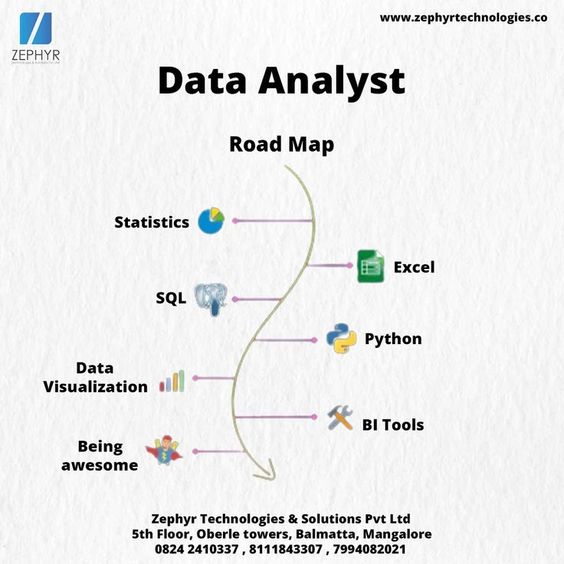Data analysis is one of the most in-demand and fastest-growing careers in the modern business world. As organizations continue to generate and collect vast amounts of data, the need for data analysts who can interpret, manipulate, and present that data in a meaningful way has skyrocketed. If you’re interested in becoming a data analyst, this roadmap will guide you through the skills, tools, and knowledge you need to build a successful career in this field.
Develop a Strong Foundation in Math and Statistics
The first step to becoming a data analyst is to build a strong foundation in math and statistics. These skills are essential for understanding the core concepts and techniques used in data analysis. Courses in calculus, linear algebra, probability theory, and statistics will give you a solid understanding of the mathematical concepts that underpin data analysis.
For statistics, we recommend the following courses:
Learn to Code
The next step is to learn to code. Data analysts typically use programming languages such as Python, R, and SQL to collect, clean, and manipulate data. Familiarity with these languages is essential for working with data in a meaningful way. Python and R are particularly popular in data analysis, as they have powerful libraries and tools for data manipulation, visualization, and statistical analysis.
We Recommend the following courses if you are new to programming:
If you have a programming background, we recommend the following courses:
Learn Data Visualization
Data visualization is the art of presenting data in a visually appealing and informative way. It’s an essential skill for any data analyst, as it helps to communicate insights and findings to stakeholders. Tools such as Tableau and Power BI are commonly used in data visualization.
We recommend the following courses to build strong visualization knowledge
We also suggest the following courses to learn SQL:
Learn Machine Learning
Machine learning is a subset of artificial intelligence that involves teaching machines to learn from data. As a data analyst, understanding the basics of machine learning is essential for identifying patterns and trends in data. Python and R both have libraries and tools for machine learning, such as scikit-learn and caret.
For machine learning, we recommend the following courses:
Practice Data Cleaning and Wrangling
Data cleaning and wrangling is the process of preparing raw data for analysis. This involves tasks such as removing duplicates, filling in missing values, and transforming data into a usable format. Data cleaning and wrangling is a crucial step in any data analysis project, as it ensures that the data is accurate and reliable.
Work on Real-World Projects
The best way to learn data analysis is by working on real-world projects. This will give you the opportunity to apply your skills in a practical setting and build a portfolio of work that you can showcase to potential employers. Look for opportunities to work on data analysis projects in your current role, or consider taking on freelance projects to gain experience.
We Recommend the following courses:
Stay Up-to-Date with Industry Developments
The world of data analysis is constantly evolving, and it’s essential to stay up-to-date with the latest tools, techniques, and trends. Follow industry blogs, attend conferences and webinars, and participate in online forums to stay informed about new developments in the field.
Build a Professional Network
Finally, building a professional network is essential for success in any career, including data analysis. Attend industry events, join professional organizations, and connect with other data analysts on social media platforms such as LinkedIn. Networking can help you stay informed about job openings and industry developments, and may even lead to new job opportunities.
We Recommend the following courses:


